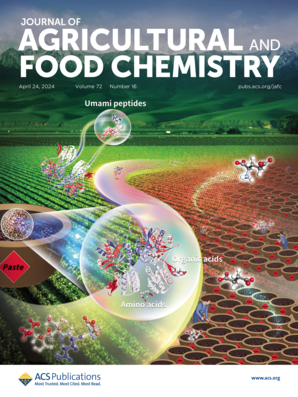Comparison of the Immunomodulatory Roles of Porcine Milk-Derived Extracellular Vesicles from Different Stages of Lactation
IF 5.7
1区 农林科学
Q1 AGRICULTURE, MULTIDISCIPLINARY
引用次数: 0
Abstract
Milk-derived extracellular vesicles (MEV) have received increasing attention due to their physiological benefits for newborn growth and development. However, their physiological characteristics and immunomodulatory capacities during lactation remain unclear. In this study, we isolated MEV from porcine milk at day 1, week 1, week 2, and week 3 after parturition and compared their differences by common EV characterization, showing the higher concentration and smaller mean size of MEV from colostrum. Porcine MEV could be internalized by RAW264.7 macrophages and functionally deliver immune-related microRNAs (miRNAs). Furthermore, MEV promoted macrophage polarization toward the M2-like phenotype and exerted anti-inflammatory effects in vitro. Mice models with sepsis also displayed that MEV suppressed the secretion of pro-inflammatory cytokines in serum and drove an anti-inflammatory M2-like phenotype of the spleen, ultimately weakening immune responses. Especially, MEV from colostrum exhibited the most robust effects on immunoregulation. Overall, this study provides valuable information for MEV secretion patterns and their differences in immunomodulatory bioactivities.

不同哺乳期猪乳源性细胞外囊泡免疫调节作用的比较
乳源性细胞外囊泡(MEV)因其对新生儿生长发育的生理益处而受到越来越多的关注。然而,它们在哺乳期间的生理特性和免疫调节能力尚不清楚。在本研究中,我们分别在分娩后第1天、第1周、第2周和第3周从猪乳中分离MEV,并通过共同EV表征比较了它们的差异,发现初乳MEV浓度较高,平均体积较小。猪MEV可以被RAW264.7巨噬细胞内化,并功能性地传递免疫相关的microRNAs (miRNAs)。此外,MEV促进巨噬细胞向m2样表型极化,并在体外发挥抗炎作用。脓毒症小鼠模型也显示,MEV抑制血清中促炎细胞因子的分泌,导致脾脏出现抗炎的m2样表型,最终削弱免疫反应。其中,初乳MEV对免疫调节的作用最为显著。总之,本研究为MEV分泌模式及其在免疫调节生物活性方面的差异提供了有价值的信息。
本文章由计算机程序翻译,如有差异,请以英文原文为准。
求助全文
约1分钟内获得全文
求助全文
来源期刊
CiteScore
9.90
自引率
8.20%
发文量
1375
审稿时长
2.3 months
期刊介绍:
The Journal of Agricultural and Food Chemistry publishes high-quality, cutting edge original research representing complete studies and research advances dealing with the chemistry and biochemistry of agriculture and food. The Journal also encourages papers with chemistry and/or biochemistry as a major component combined with biological/sensory/nutritional/toxicological evaluation related to agriculture and/or food.

 求助内容:
求助内容: 应助结果提醒方式:
应助结果提醒方式:


